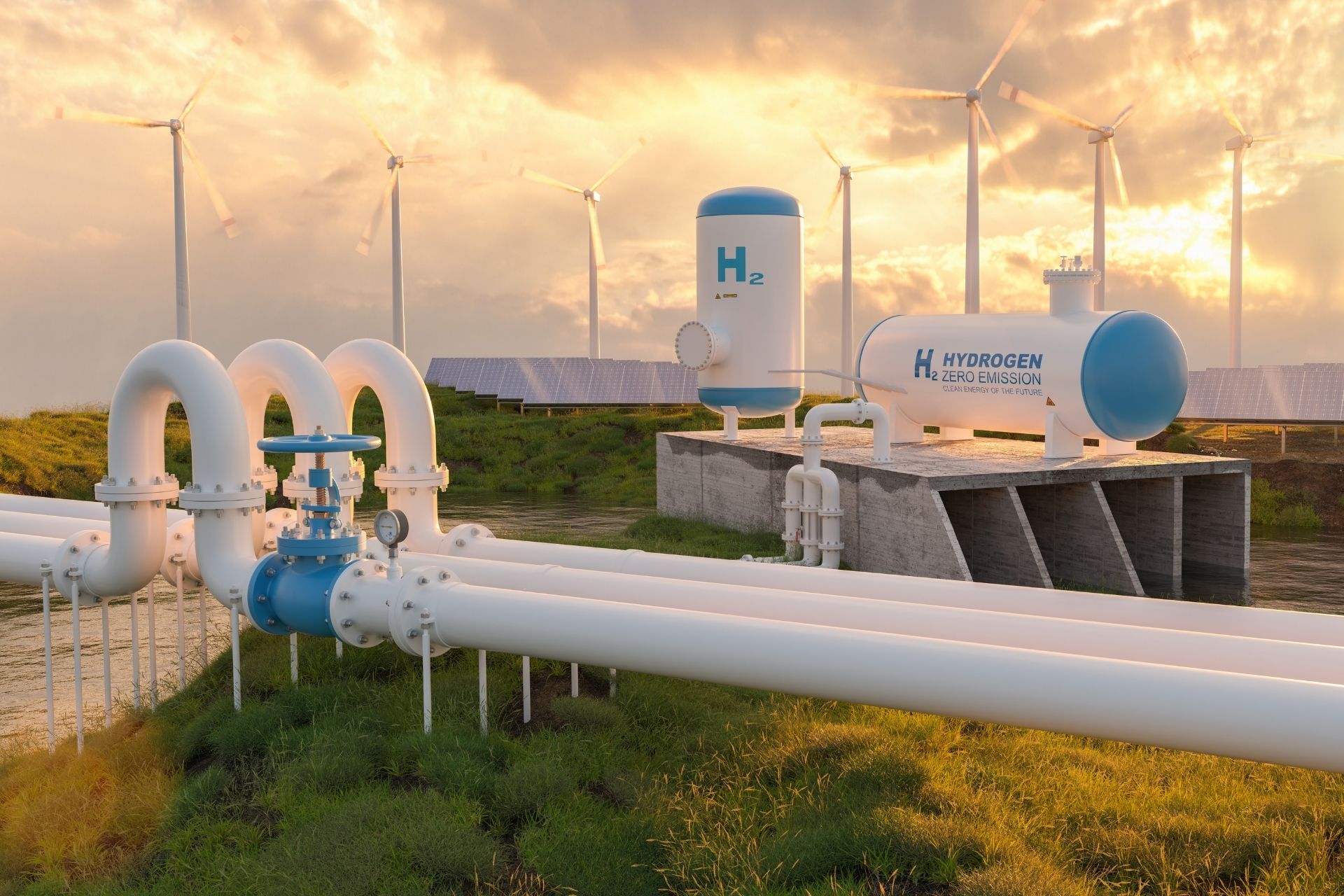Highlights
• On Oct. 13, just six months after receiving final applications, the administration and the DOE announced the selection of seven regional clean hydrogen production hubs that will share $7 billion in federal funding
• During this same period there has been substantial enhancement of demand-side incentives for clean hydrogen, including an additional $1 billion federal investment, to provide market certainty and drive innovative end uses of clean hydrogen
• Notwithstanding this programmatic progress and momentum, the uncertainty arising from the Treasury’s continued delay in issuing guidance on eligibility for clean hydrogen production and other tax credits may slow down hub and infrastructure financing and development
Babe Ruth's called shot in the 1932 World Series is a true legend. The Department of Energy’s (DOE’s) Hydrogen Shot, which aims to accelerate hydrogen technology breakthroughs and cut the cost of clean hydrogen to $1 per kilogram by 2031, is well on its way to becoming one.
Selection of the Regional Clean Hydrogen Hubs
In late 2021, Congress incentivized achievement of national clean energy goals with an $8 billion appropriation in the Bipartisan Infrastructure Law (BIL) for development of a national network of regional clean energy hubs (H2Hubs) to accelerate the large scale production and use of low-cost hydrogen as a clean energy replacement for fossil fuels. In December 2022, the DOE encouraged 33 of the 79 groups that had submitted Concept Papers to apply, and 22 did so by the April 2023 deadline.
On Oct. 13, 2023, the Biden administration and the DOE announced the selection of the seven regional hubs “for negotiation” that will serve as the backbone for a national network of clean hydrogen producers, consumers, and connective infrastructure and support the production, storage, delivery, and end use of clean hydrogen. In addition to the merit review criteria, the selection officials “also applied a portfolio approach to ensure the selected projects satisfied all of the statutory requirements with respect to feedstock diversity, end use, and geographic diversity.”
The hubs are, as expected, spread across the country and the selected applicants (all public-private groups) include a total of 16 states:
- Mid-Atlantic Clean Hydrogen Hub (MACH2), $750 million – Pennsylvania, Delaware, New Jersey
- Appalachian Regional Clean Hydrogen Hub (ARCH2), $925 million – West Virginia, Ohio, Pennsylvania
- Alliance for Renewable Clean Hydrogen Energy Systems (ARCHES), $1.2 billion – California
- Gulf Coast Hydrogen Hub (HyVelocity), $1.2 billion – Texas
- Heartland Hydrogen Hub, $925 million – Minnesota, North Dakota, South Dakota
- Midwest Alliance for Clean Hydrogen (MachH2), $1 billion – Illinois, Indiana, Michigan
- Pacific Northwest Hydrogen Hub (PNW H2), $1 billion – Washington, Oregon, Montana
The DOE’s Office of Clean Energy Demonstrations’ (OCED) map depicting the hub locations can be accessed here.
In addition to collectively sharing $7 billion in federal funding, these seven H2Hubs have committed more than $40 billion in private investment. The groups have estimated that nearly 335,000 jobs will be created to construct and operate the H2Hubs, of which approximately 112,000 will be permanent. All of the hubs have also committed to Community Benefits Plans “to ensure local priorities are at the forefront and all communities share in the benefits of the clean energy transition.”
According to the White House announcement, all seven hubs will produce some hydrogen using renewable energy, and two-thirds of the total project investment in the hubs is associated with green (electrolysis-based) hydrogen production. In addition, several hubs will use nuclear power to produce pink hydrogen, at least three will use natural gas with carbon capture and storage to produce blue hydrogen. The White House noted:
“Collectively, the hubs aim to produce more than three million metric tons of clean hydrogen per year, thereby achieving nearly one third of the 2030 U.S. clean hydrogen production goal. Together, the seven Hydrogen Hubs will eliminate 25 million metric tons of carbon dioxide emissions from end uses each year—an amount roughly equivalent to combined annual emissions of over 5.5 million gasoline-powered cars.”
In order to secure the actual award, each of the selected hubs has to successfully complete the negotiation process. The DOE can terminate negotiations and withdraw the selection for any reason at any time until final award. During negotiations, which are expected to take three to six months, the OCED will work with selected H2Hubs to strengthen Community Benefits Plans and address project weaknesses.
H2Hubs that receive an award will move to the planning phase, the first of the four phases for each hub (planning, development, construction, and operation). That phase involves relatively nominal funding (up to $20 million), requires 50 percent cost matching by the hub, and will take up to 18 months. Between each phase, the OCED will consider whether a project is meeting its technical, financial, and community benefits commitments, and assess whether the hub should progress to the next phase and receive additional funding.
Progress on the Demand Side
In July 2023, the administration recognized that, notwithstanding all of the supply-side incentives, there were substantial demand-side challenges to the hydrogen program’s success. In response, they announced an additional $1 billion investment from the BIL to provide demand-side support and market certainty for H2Hubs during the early years of operation and to drive innovative end uses of clean hydrogen.
Information collected by the DOE indicated that among other favored demand-side mechanisms, there is substantial support for pay-for-difference or “market maker” in which the DOE makes up the gap between buyer willingness-to-pay and market-determined pricing, as well as for stacking those demand-side measures with tax incentives and cooperative agreements.
Public comment also supported utilizing a single independent implementing entity with a national scope to oversee and implement the initiative. The DOE issued a request for proposals in September 2023 to solicit one or more U.S. nonprofit entities to support and execute clean hydrogen demand-side support mechanisms (including pay-for-difference) for at least five years. Applications are due Oct. 26, and selection and notification by the DOE is expected by Nov. 30.
The Missing Link – IRS Guidance on the Clean Hydrogen Production Tax Credit
The Department of Treasury and IRS’ continued delay in issuing required guidance on the new clean hydrogen production and investment tax credits added by the Inflation Reduction Act (IRA) continues to be the bottleneck that may potentially stymie funding and development of the H2Hubs.
The new Section 45V Clean Hydrogen Production Tax Credit promulgated by the IRA is central to the economic success of domestic hydrogen production via the regional hubs. Section 45V gives qualified projects that begin construction before 2033 a tax credit for 10 years after startup with up to a $3 credit per kilogram (if available bonus “adders” apply). Projects can also elect to claim up to a 30 percent investment tax credit under Section 48.
The Section 45V credit is allowed for producing “qualified clean hydrogen.” Determination of whether hydrogen is sufficiently clean for a project to qualify depends on the carbon intensity of production and the lifecycle greenhouse gas emissions rate – and mechanisms are required to measure these for the different hydrogen production processes.
The IRA required the Treasury to provide guidance on what constitutes “qualified clean hydrogen” (so a producer can determine if it is eligible for IRA tax credits) by Aug. 16, 2023, the first anniversary of the IRA’s enactment. That date has come and gone and there have been no public signals from the agencies as to when they will issue the guidance; some news reports suggest it will be by year-end. The longer the agencies delay, the more intense the lobbying by industry and environmental groups will be on how flexible or stringent it should be for hydrogen to qualify as clean.
As a result, the H2Hubs may hold off on development plans unless and until the IRS and Treasury guidance is issued and the hubs can assess whether they can utilize those credits to reduce the cost of clean hydrogen enough for producers to secure funding and obtain an adequate return on investment.
Takeaways
The DOE’s selection of the seven regional hubs to produce and supply clean hydrogen, coupled with recent progress on demand-side incentives to support the purchase of that clean hydrogen, goes a long way toward establishing the hydrogen market that is central to achieving the U.S. goals for a carbon pollution-free power sector by 2035 and for net-zero emissions no later than 2050.
The missing link needed to address the overall financial uncertainties that loom over hub planning and development is the Treasury’s guidance on the criteria for investments in hubs to be eligible for clean hydrogen production and related tax credits.
Once those uncertainties are addressed, while there will certainly be continuing commercial, practical and political challenges, the stage should be set to meet the DOE’s Hydrogen Shot and reduce the cost of clean hydrogen by 80 percent to $1 per 1 kilogram in 1 decade.
For more information, please contact the Barnes & Thornburg attorney with whom you work or Bruce White at 312-214-4584 or bwhite@btlaw.com.
© 2023 Barnes & Thornburg LLP. All Rights Reserved. This page, and all information on it, is proprietary and the property of Barnes & Thornburg LLP. It may not be reproduced, in any form, without the express written consent of Barnes & Thornburg LLP.
This Barnes & Thornburg LLP publication should not be construed as legal advice or legal opinion on any specific facts or circumstances. The contents are intended for general informational purposes only, and you are urged to consult your own lawyer on any specific legal questions you may have concerning your situation.













